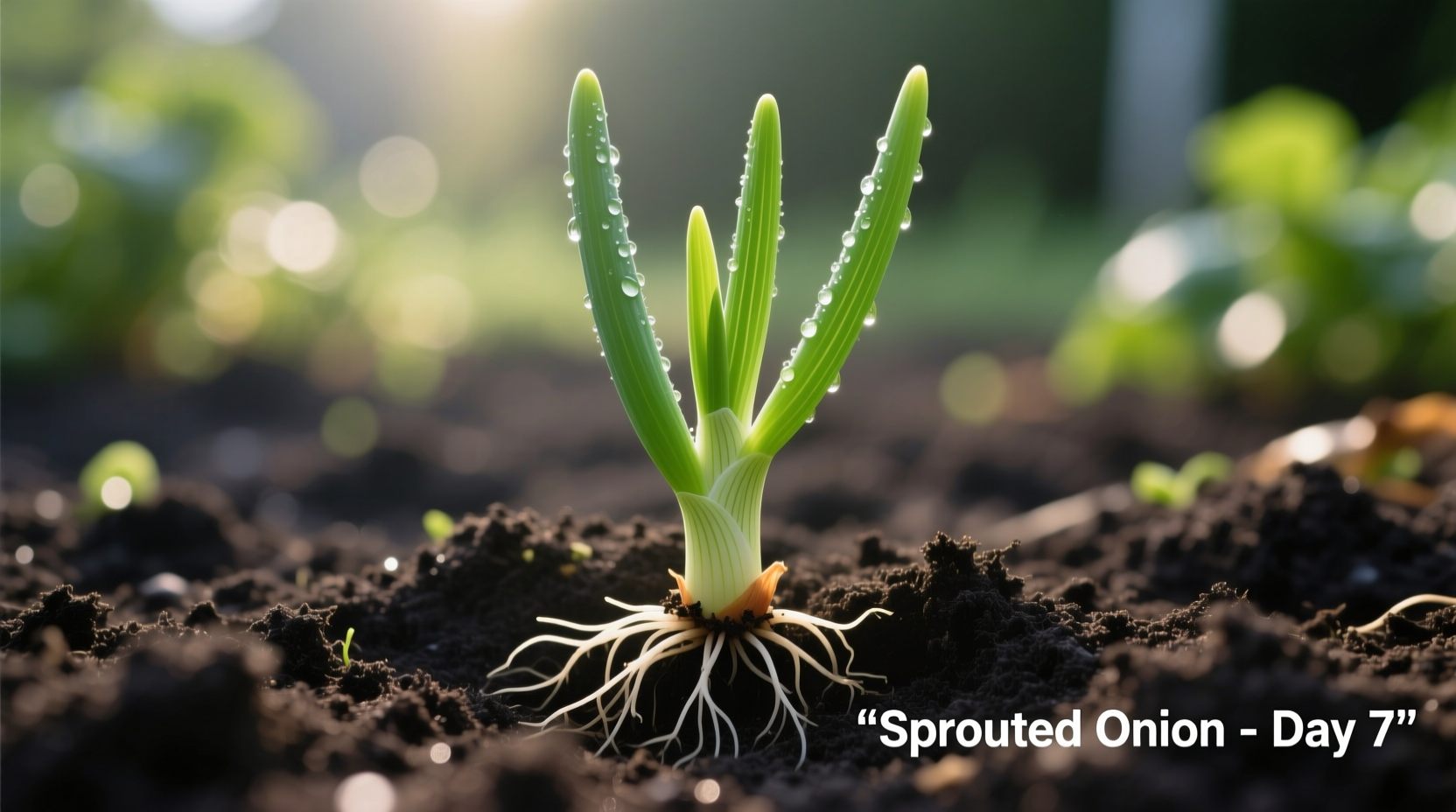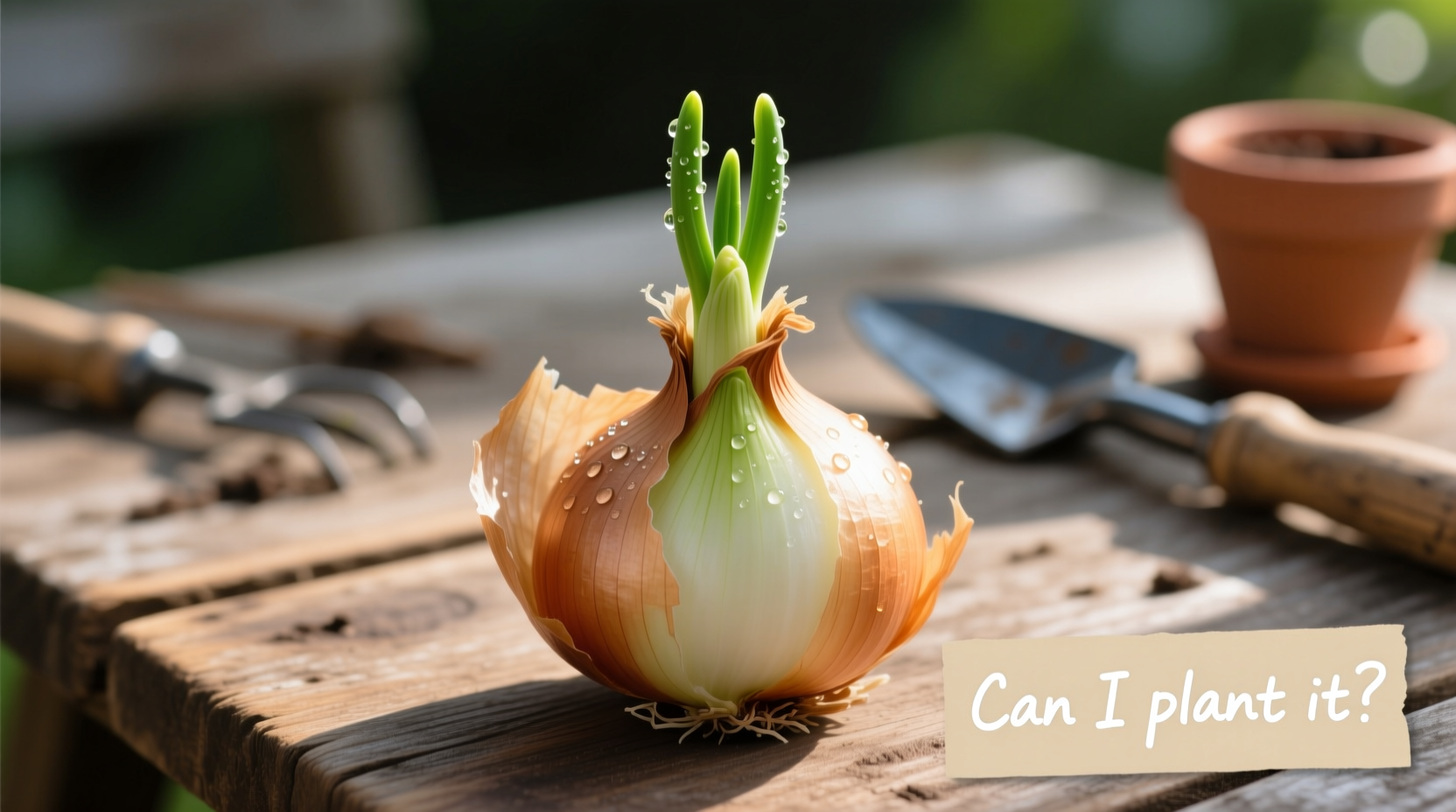Have you discovered your stored onions have started sprouting? Don't toss them! Those green shoots emerging from your kitchen onions represent a perfect opportunity to grow fresh onions at home. Many home gardeners successfully rescue sprouted onions that would otherwise go to waste, turning them into productive plants with minimal effort.
Why Onions Sprout in Storage
Onions naturally enter dormancy after harvest, but when exposed to warm temperatures and humidity in your kitchen, they receive signals that spring has arrived. This triggers their biological imperative to grow. The sprouting process begins when the onion's internal energy reserves activate the embryonic plant within.
| Sprouting Stage | Timeframe | What's Happening |
|---|---|---|
| Initial sprouting | 1-2 weeks | Green shoots emerge from top; roots begin forming at base |
| Active growth | 3-4 weeks | Shoots grow 2-4 inches; roots become visible |
| Advanced sprouting | 5+ weeks | Onion begins to shrivel as energy transfers to new growth |
Can You Plant a Sprouted Onion? The Complete Answer
The straightforward answer is yes—you can plant sprouted onions with excellent success rates. According to research from the University of California Agriculture and Natural Resources, onions that have begun sprouting actually have a head start on growth compared to planting from seeds or sets. The sprouting process indicates the onion is physiologically ready to grow, making it an ideal candidate for planting.
However, success depends on proper technique and timing. Onions that have just begun sprouting (with shoots under 2 inches) generally perform better than those that have been sprouting for weeks and have significantly depleted their energy reserves.
Step-by-Step: Planting Your Sprouted Onion
Step 1: Prepare Your Sprouted Onion
Carefully separate the green sprouts from the onion bulb if they've grown significantly. For onions with shorter sprouts (under 2 inches), plant them whole. If roots have already formed at the base, handle them gently to avoid damage. The Royal Horticultural Society recommends trimming excessively long sprouts to about 3 inches to reduce stress on the plant.
Step 2: Choose the Right Container or Garden Spot
Onions need well-draining soil and at least 6 hours of direct sunlight daily. Whether planting in your garden or a container:
- Use loose, fertile soil with good drainage
- Ensure containers are at least 6 inches deep
- Maintain soil pH between 6.0-7.5 for optimal growth
Step 3: Planting Technique
Plant your sprouted onion with the pointy end up, just below the soil surface. The top of the bulb should be visible above the soil line. Space plants 4-6 inches apart in rows 12-18 inches apart. Water thoroughly after planting, but avoid overwatering which can cause rot.

What to Expect: Growth Timeline
Understanding the realistic growth expectations prevents disappointment. Your sprouted onion won't produce a large bulb like commercial varieties, but you'll get valuable green onions and potentially small bulbs:
- Weeks 1-2: Existing sprouts continue growing; new roots establish
- Weeks 3-4: Green shoots thicken; you can begin harvesting scallion-style
- Weeks 5-8: Bulb begins forming; continue harvesting greens as needed
- Weeks 9-12: Small bulbs develop; harvest when tops begin falling over
When Planting Might Not Work: Important Limitations
While planting sprouted onions usually succeeds, certain conditions reduce your chances:
- Severely depleted bulbs: Onions that have sprouted for months and become soft or shriveled
- Diseased onions: Those showing mold, rot, or unusual discoloration
- Chemically treated onions: Commercial onions sometimes receive sprout inhibitors
- Wrong season: Planting in extreme heat or cold without protection
The USDA gardening guidelines note that while most sprouted onions can be planted, those stored in commercial settings may have been treated with growth inhibitors that reduce success rates by up to 40%.
Beyond Planting: Alternative Uses for Sprouted Onions
If planting isn't feasible or you want additional options:
- Regrow in water: Place the base in shallow water for continuous green onion production
- Use the greens: Sprouts make excellent chives substitute in recipes
- Compost: If the onion is too far gone, add it to your compost for nutrients
Maximizing Your Success: Pro Gardener Tips
Professional gardeners recommend these techniques to improve your sprouted onion results:
- Apply balanced fertilizer every 3-4 weeks to support growth
- Keep soil consistently moist but not soggy
- Remove flower stalks if they form to direct energy to bulb development
- Rotate planting location annually to prevent disease buildup
Remember that onions grown from sprouted kitchen bulbs typically produce smaller bulbs than those grown from proper onion sets. However, the green tops provide continuous harvest throughout the growing season.











 浙公网安备
33010002000092号
浙公网安备
33010002000092号 浙B2-20120091-4
浙B2-20120091-4